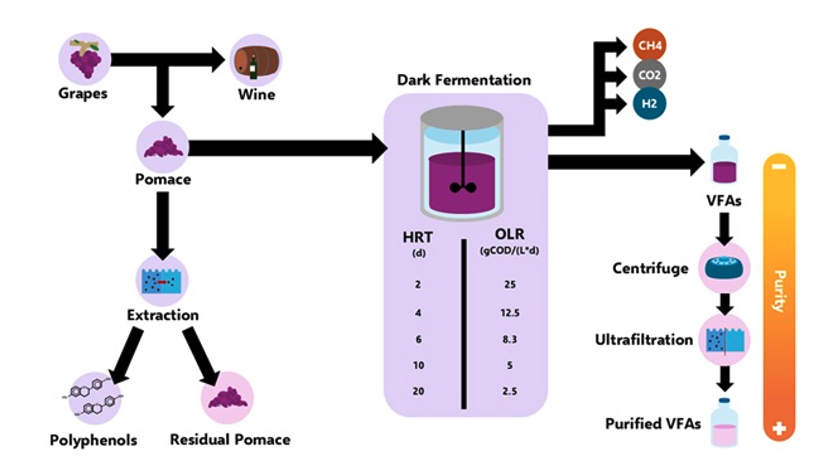
Valorization of grape marc in a biorefinery loop for producing short- and medium-chain fatty acids, hydrogen, and methane, with polyphenol recovery
Abstract
Global grape production amounts to approximately 70 million tons per year, with Europe contributing 61% of the world’s wine output, primarily from Italy, France, and Spain. This research focused on utilizing red grape marc (RGM), a byproduct of winemaking, in a laboratory-scale biorefinery to generate fatty acids, hydrogen, and methane. The study analyzed the influence of hydraulic retention time (HRT) and organic loading rate (OLR) on production efficiency. Short HRTs (2–6 days) inhibited yields, resulting in minimal fatty acid and biogas production. The highest yields of short-chain fatty acids, caproic acid, and hydrogen were achieved at 10 days HRT and 5 gCOD/L·d OLR, with respective outputs of 30%, 5% w/w, and 25 LH₂/kgVS. The presence of trace amounts of heptanoic and octanoic acids suggested the initial stages of chain elongation. A downstream purification process involving centrifugation and ultrafiltration produced a fatty acid stream with over 90% purity, suitable for future applications in Single Cell Oils. Methane generation was most effective at 20 days HRT and 2.5 gCOD/L·d OLR, yielding 160–170 LCH₄/kgVS. Additionally, the study examined the role of polyphenols, revealing that their removal led to a 30% decline in methane production, likely due to the simultaneous extraction of fermentable sugars crucial for methane formation.

Figure 1.
Issue: GreenWINE 2025
Type: Oral
Authors
1 Department of biotechnology, University of Verona, Via Strada Le Grazie 15, 37134, Verona, Italy
